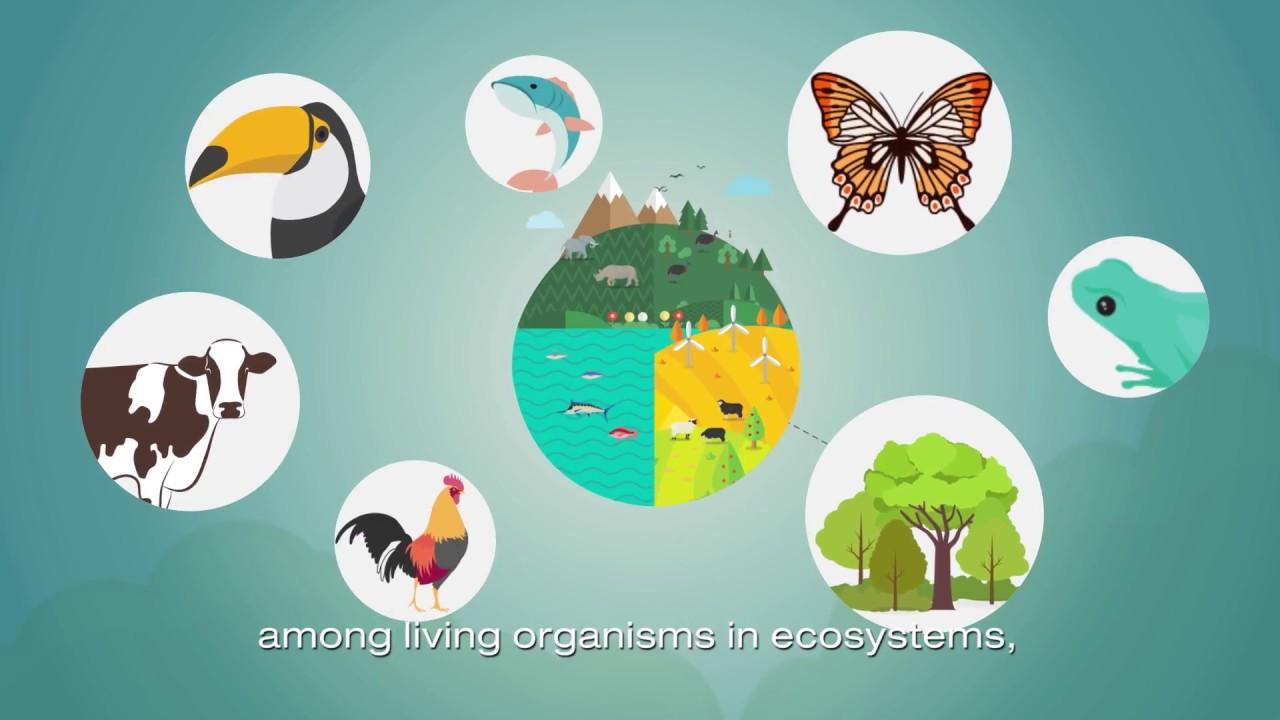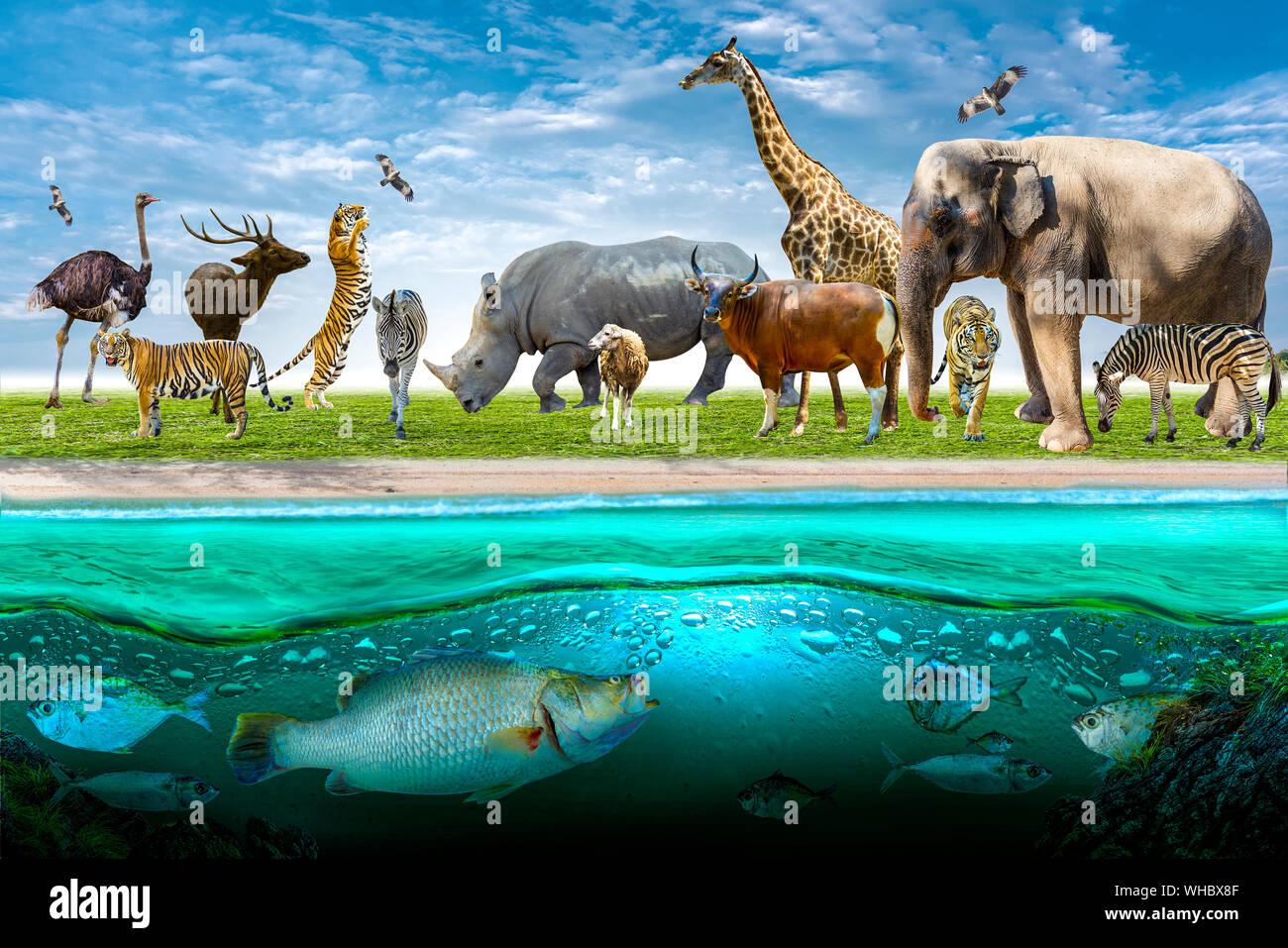In a world bustling with progress and innovation, the echoes of nature often struggle to resonate amidst the clamor of urban life. Yet, beneath the surface of our daily journey, a silent crisis unfolds—endangered species teeter on the brink of extinction, their fates intertwined with our own. “” delves into the intricate tapestry of conservation efforts, highlighting the vital role that every individual can play in preserving the rich biodiversity of our planet. As we navigate the complex web of ecological interdependence, this article unravels innovative strategies, grassroots initiatives, and the tireless dedication of those committed to safeguarding the fragile balance of life on Earth. Join us as we explore the path toward a sustainable future, where the guardianship of our natural world becomes a collective mission, empowering us all to act as stewards for the species that share this beautiful planet with us.
Table of Contents
- Embracing Biodiversity: The Importance of Ecosystem Preservation
- Innovative Conservation Approaches: Harnessing Technology for Wildlife Protection
- Community Engagement: Empowering Local Voices in Species Conservation
- Legislative Action: Advocating for Stronger Wildlife Protection Laws
- Key Takeaways
Embracing Biodiversity: The Importance of Ecosystem Preservation

Preserving ecosystems is vital for the health of our planet, as they serve as the intricate web of life that sustains countless species, including our own. Each organism, from the tiniest microbes to the largest mammals, plays a unique role in maintaining the balance within their environment. When ecosystems thrive, they provide essential services such as clean air, fresh water, and fertile soil. By implementing sustainable practices, we can help protect these natural habitats from exploitation and degradation. We must recognize the interdependence of all living beings and commit to fostering a rich tapestry of life around us.
To effectively combat the threats against biodiversity, it’s crucial to adopt various conservation strategies that prioritize ecosystem preservation. These strategies may include:
- Establishing Protected Areas: Designating national parks and reserves to safeguard habitats from human encroachment.
- Restoration Projects: Rehabilitating damaged ecosystems to restore their integrity and functionality.
- Community Engagement: Involving local communities in conservation efforts, ensuring that sustainable practices are integrated into their livelihoods.
- Legislation and Policy: Advocating for laws that protect endangered species and their habitats from overexploitation.
By taking conscious actions to maintain and restore our ecosystems, we can create a world where biodiversity is celebrated and preserved. As stewards of the earth, our responsibility extends to future generations, ensuring that the rich variety of life continues to thrive.
Innovative Conservation Approaches: Harnessing Technology for Wildlife Protection

Technology plays a pivotal role in modern conservation efforts, providing innovative tools that enhance our ability to protect wildlife. Drones equipped with high-resolution cameras are transforming the way we monitor endangered species, allowing us to survey vast areas of land without disturbing their habitats. These unmanned aerial vehicles can track animal movements, document changes in landscape, and even assist in anti-poaching patrols by identifying suspicious activities from the sky. Additionally, the use of GPS collars on wildlife enables researchers to gather critical data on animal behavior and migration patterns, facilitating more effective management strategies.
Moreover, the integration of artificial intelligence and machine learning into conservation practices is revolutionizing data analysis. For instance, sophisticated algorithms can process thousands of camera trap images, accurately identifying species and flagging anomalies that require immediate attention. The development of mobile applications empowers local communities to report wildlife sightings and threats in real time, fostering a collaborative approach to conservation. By harnessing technology, conservationists can streamline their efforts, allocate resources more efficiently, and ultimately enhance the survival prospects of endangered species.
Community Engagement: Empowering Local Voices in Species Conservation
In the intricate dance of species conservation, the role of local communities is nothing short of transformative. Engaging these communities is crucial, as they often possess invaluable knowledge about their environments and the species that inhabit them. By fostering partnerships and creating platforms for dialogue, conservationists can tap into this rich reservoir of local wisdom. Empowerment takes shape when communities are given the tools, resources, and authority to take charge of conservation initiatives. Workshops, training sessions, and local governance arrangements can help bridge gaps and elevate indigenous voices to the forefront of conservation efforts.
Utilizing various strategies ensures that conservation efforts resonate with local needs and aspirations. Some effective approaches include:
- Establishing community-led monitoring programs to track species health and habitat conditions.
- Facilitating educational initiatives that raise awareness about the importance of biodiversity and its preservation.
- Creating incentive schemes that reward communities for successful conservation practices, strengthening their economic ties to natural stewardship.
By promoting active participation and investment in local conservation, we can cultivate a culture where community members become true guardians of nature, ensuring the survival of endangered species for generations to come.
Legislative Action: Advocating for Stronger Wildlife Protection Laws
To combat the alarming decline in wildlife populations, it is vital for advocates and policymakers to unite and strengthen the legislative framework surrounding environmental protection. Key areas of focus include:
- Enhanced Legal Penalties: Increasing fines and penalties for poaching and illegal wildlife trafficking can act as a significant deterrent.
- Stricter Habitat Protections: Implementing laws that secure critical habitats from development and pollution ensures that endangered species have a fighting chance.
- Public Engagement Campaigns: Educating the public about the importance of biodiversity fosters a culture of conservation and inspires grassroots advocacy.
Furthermore, collaboration between governments, non-profit organizations, and local communities proves essential in enforcing these laws effectively. A transparent monitoring system can help track compliance and progress, using metrics such as:
| Metric | Current Status | Target |
|---|---|---|
| Protected Habitats (%) | 12% | 30% |
| Poaching Incidents | 1,500 | 300 |
| Awareness Campaign Reach | 100,000 | 500,000 |
By creating robust and effective wildlife protection laws, we can ensure the survival of endangered species and preserve the delicate balance of our ecosystems for future generations.
Key Takeaways
As we conclude our exploration of the multifaceted strategies to safeguard our planet’s dwindling treasure trove of endangered species, it becomes clear that the responsibility rests not only on the shoulders of conservationists but on each of us. From grassroots initiatives that empower local communities to cutting-edge scientific research that challenges conventional wisdom, the paths to preservation are as diverse as the species we seek to protect.
Ultimately, the fight to save endangered species is not merely about the animals themselves; it is about the intricate tapestry of life that sustains our ecosystems and, by extension, humanity. By adopting a holistic approach that marries advocacy, education, and innovative practices, we can become true guardians of nature.
As stewards of this Earth, our choices ripple far beyond our immediate surroundings. Whether through supporting protective policies, engaging in sustainable practices, or simply fostering a deeper appreciation for the natural world, we can each play a pivotal role in this urgent endeavor. The time to act is now, for each species saved is a thread preserved in the fabric of life. Let us champion the cause of nature and ensure that the symphony of biodiversity continues to resonate for generations to come. Together, we can turn the tide in favor of the voiceless inhabitants of our planet, reminding ourselves that their survival is intricately tied to our own.



